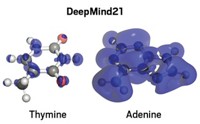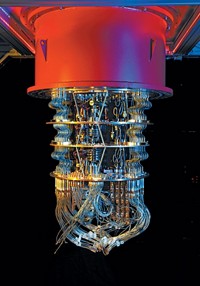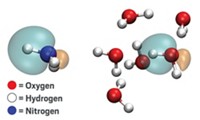Advertisement
Grab your lab coat. Let's get started
Welcome!
Welcome!
Create an account below to get 6 C&EN articles per month, receive newsletters and more - all free.
It seems this is your first time logging in online. Please enter the following information to continue.
As an ACS member you automatically get access to this site. All we need is few more details to create your reading experience.
Not you? Sign in with a different account.
Not you? Sign in with a different account.
ERROR 1
ERROR 1
ERROR 2
ERROR 2
ERROR 2
ERROR 2
ERROR 2
Password and Confirm password must match.
If you have an ACS member number, please enter it here so we can link this account to your membership. (optional)
ERROR 2
ACS values your privacy. By submitting your information, you are gaining access to C&EN and subscribing to our weekly newsletter. We use the information you provide to make your reading experience better, and we will never sell your data to third party members.
Materials
Improved density functional theory method gets band gaps right
Popular cost-saving version of computational method now gives better predictions of semiconductor properties
by Mitch Jacoby
January 16, 2017
| A version of this story appeared in
Volume 95, Issue 3
A popular quantum mechanical method for calculating the properties of molecules and solid materials has routinely underestimated the size of semiconductor band gaps. A new version of that computational method developed by University of Minnesota researchers is now showing marked improvement in calculating band gap values without sacrificing the method’s speed and simplicity (J. Phys. Chem. Lett. 2016, DOI: 10.1021/acs.jpclett.6b02757). Band gaps represent the energy difference between a material’s valence and conduction electron bands, with the magnitude making the difference between conductors, insulators, and semiconductors. Researchers have long used the Kohn-Sham form of density functional theory (KS-DFT) to investigate electron band structures, excitation energies, and other fundamental properties. One version of KS-DFT relies on so-called local functionals—mathematical descriptions of electron density—and is popular because its simplicity offers substantial computational cost savings relative to other quantum methods. But local functional programs tend to miss the mark on band gaps, forcing researchers to refine their work using computationally-intensive methods based on nonlocal functionals. Pragya Verma and Donald G. Truhlar developed a local functional, called HLE16, and tested it on 31 semiconductors. They find that it yields more accurate band-gap estimates than current local functionals and matches the low-error values of the most popular nonlocal functionals.





Join the conversation
Contact the reporter
Submit a Letter to the Editor for publication
Engage with us on Twitter